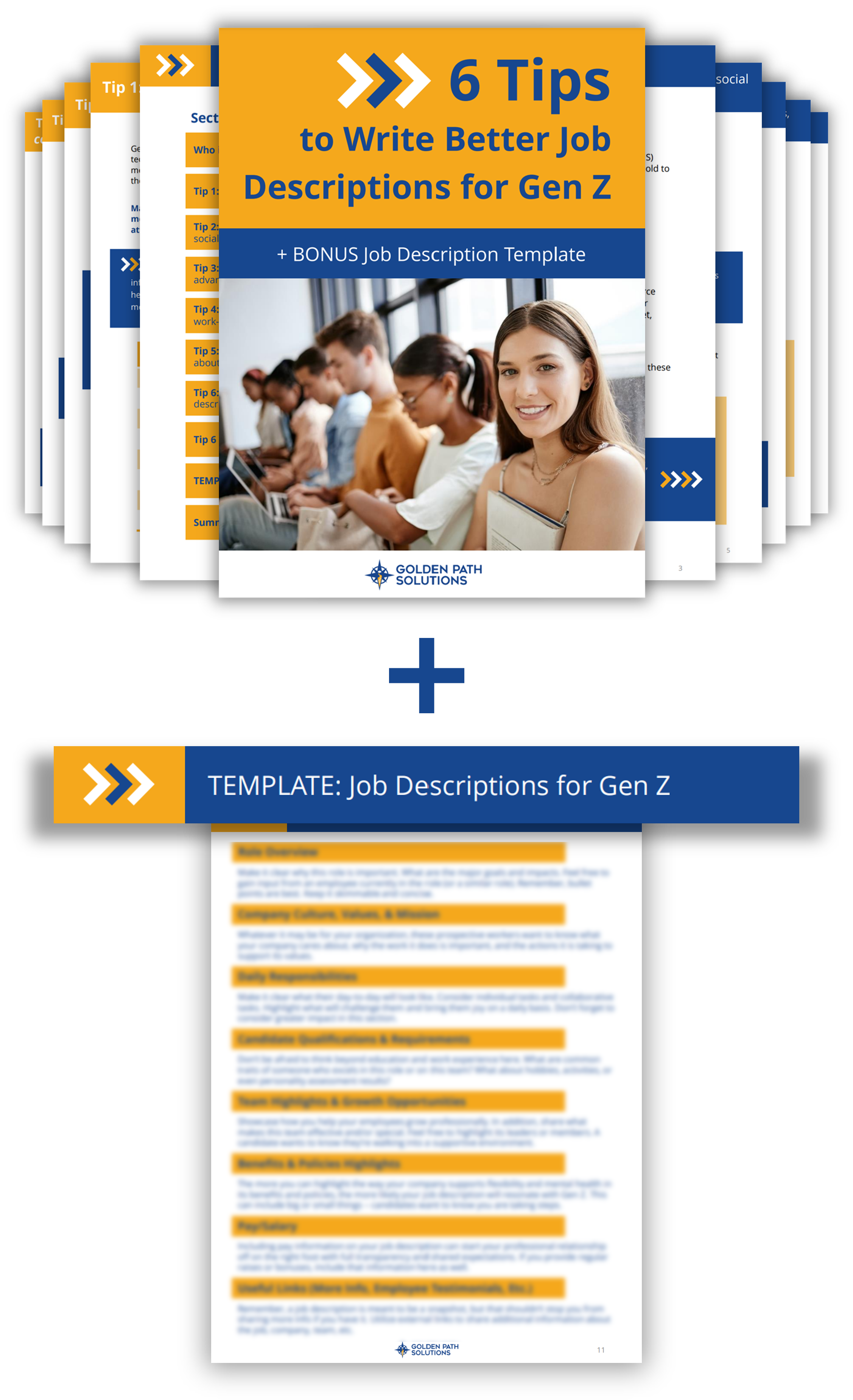Attention employers: going forward, a successful and sustainable workforce development strategy is going to heavily rely on attracting Gen Z workers to your careers.
Why? Because Gen Z has already begun entering the workforce, and will dominate early/new hires for the next decade.
Let’s first understand what makes this generation unique, and then discuss what they look for in a job description, so you can connect with the right Gen Z workers for your company.
Who is Gen Z?
This generation encompasses about 68.6 million individuals (in the US) born from 1996 to 2012, with ages currently spanning from 10 years old to 26 years old.
Gen Z is largely known for:
- Growing up with modern technology and the internet
- Their collective desire to improve the world around them
- Spending their formative years amid the COVID pandemic
With the oldest members of this generation now part of the labor force and the majority at an age where they are planning and preparing for future careers, it’s imperative that employers understand the mindset, priorities, and communication styles of this cohort, and tailor their workforce development strategy accordingly.
How to Write Better Job Descriptions to Attract Gen Z
1. Keep it skimmable and well-organized
Gen Z are digital natives, meaning they’ve grown up with modern technology, social media, mobile devices, computers, and the internet. This means they’ve become experts at quickly identifying what information (out the endless available content at their fingertips) is worth their time. Making your job descriptions well-organized and skimmable, with the most important information front and center, is key to attracting the attention of Gen Z. Rather than including long-winded paragraphs, consider breaking info into bullet points when possible, or shorter tidbits with clear, bolded headlines. Readers should be able to find the exact info they care about most within seconds of looking at your job description.
2. Highlight your company values, mission, & social responsibility prominently
At least one of the sections included in your job description should center around your company’s mission, values, and social responsibility. In general, Gen Z cares deeply about the ways an organization contributes to their communities, whether that be through environmental sustainability, promoting equity and inclusion, or simply supporting and giving back to their local communities. Whatever it may be for your organization, these prospective workers want to know what your company cares about, why the work it does is important, and the actions it is taking to support its values. In addition, making this clear will help attract the right employees to your organization – ones who identify with your mission and priorities, and that are more likely to fit into your company culture.
3. Share opportunities for mentorship, growth, & advancement
While many associate younger generations with job-hopping and the gig economy, Gen Z is proving them wrong by seeking out more stability in their first jobs (2 out of 3 members of the college class of 2022 say they see themselves having a long-term career with their first employer). And despite growing up in the age of personal relationships being distanced by phone screens, text messages, and social media (or perhaps because of it), they crave 1-on-1 mentorship and feedback in the workplace. They are eager to learn from those with experience to find their way in a new career, and they want to know their organization and direct leaders will help their professional growth. Knowing this, we recommend sharing potential future opportunities for advancement; any professional development or skill-building opportunities offered through your organization; and any other info on how your company supports long-term growth in the role or organization. You may also consider including information, photos, or quotes from the team or mentor to give a potential worker a clearer picture of their support system and community at work.
This is exactly what we offer through Career Profiles shared on our workforce development platform, Compass. We saw that Gen Z was craving a way to explore and connect with real careers and employers online, and that companies could benefit from getting in front of this new generation earlier. Career Profiles are similar to a job description, except they can describe both current and future roles at your company, and give students an even deeper look at what working at your company would be like.
Compass’s unique matching capabilities puts your roles in front of the students who have your ideal employee qualities. The result is that employers and students connect meaningfully, paving the way for successful future employment.
You can create your Compass Career Profiles on your own or have Golden Path interview your employees and professionally write the profiles for you. Reach out to patrick@goldenpath.net to learn more.
Discover more ways to connect with Gen Z through Compass Career Profiles (and other options like work-based learning and sponsorships) here.

Dive deeper into these tips + more in our FREE resource:
6 Tips to Write Better Job Descriptions for Gen Z
+ a bonus Job Description Template!
This free resource lays out our top 6 tips to writing better job descriptions for Gen Z, including bonus examples, prompts, and a detailed job description template! With this guide, you’ll be connecting with the right Gen Z workers for your company in no time.

